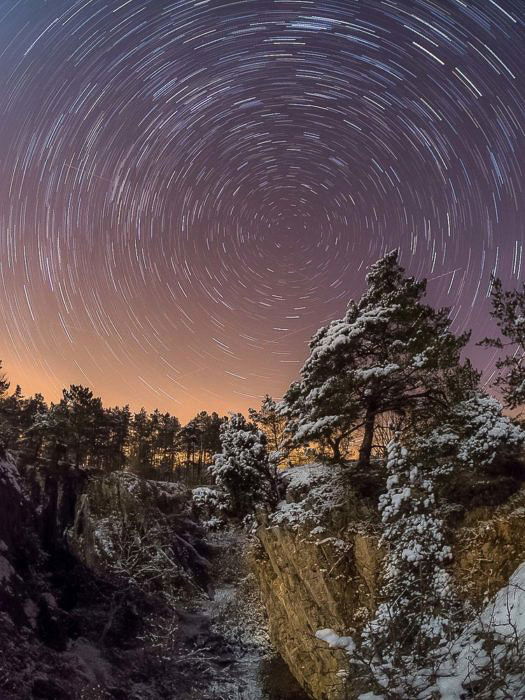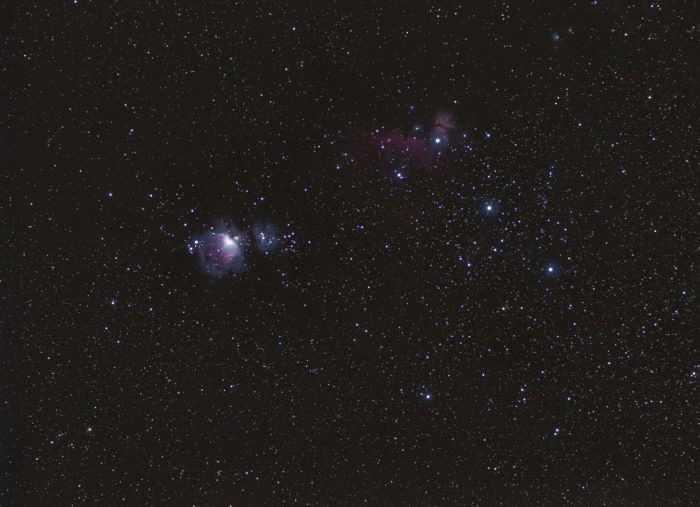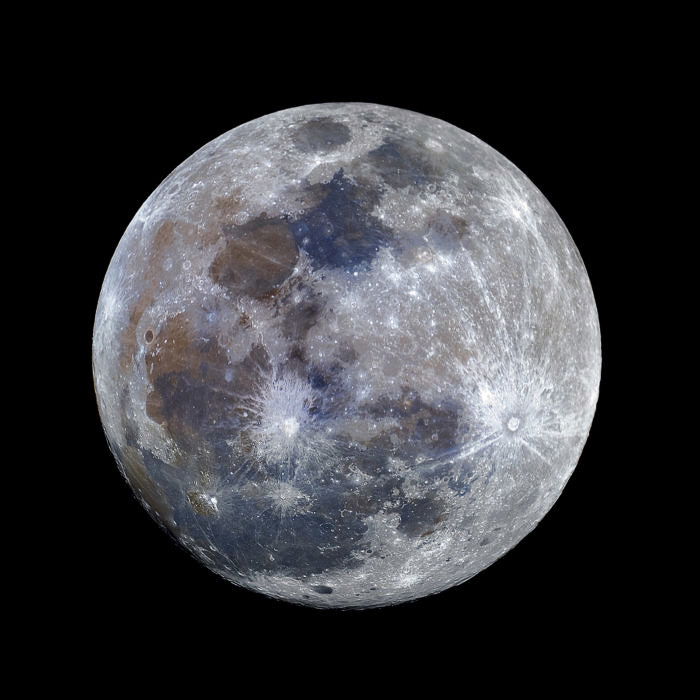Telescope mounts are an important part of any telescope setup. They hold the telescope in place and keep it stable while you view objects in the night sky. There are many different types of telescope mounts available, and each has its own advantages and disadvantages. In this article, we will take a look at the best telescope mounts for 2022 and discuss what makes them stand out from the competition.
What Are The Benefits of Telescope Mounts and Why Do You Need an Astronomical Mount?
Tripods keep your camera steady for low light and nighttime photography. So why is your tripod not good enough for astrophotography?
Because the stars move. Their motion in the sky is due to Earth rotation, but we won’t get too technical here.

The bottom line is that stars move across the sky. Taking a long exposure on a tripod will turn the stars into streaks of light.
These are star trails, and they can lead to amazing results.

With a tracking mount, you can expose the night sky for a longer time without having star trails.
There won’t be any motion blur covering the many interesting stars up there.

Thanks to tracking, we can see many other sky objects.
These include The Great Orion Nebula, hints of the Barnard’s Loop and Lamba Orionidis nebulae, the Horsehead and Flame Nebula next to Alnitak (the leftmost star in Orion’s belt), the Rosette Nebula and Sirio.
What You Need To Know About Astrophotography Mounts
Not all mounts are created equal. Some are very portable. Others are very accurate or have great payload capabilities.
There is no shortage of mounts on the market. This can be intimidating, particularly because of the terminology and acronyms you’ll find in their technical sheets.
Depending on the way they track the movement of stars, mounts can be divided into Altazimuth and Equatorial mounts.
Altazimuth Mounts

Altazimuth mounts, also known as Alt/Az mounts, allow you to rotate the payload (telescope or camera) around the vertical.
You can swing it left to right (azimuth), and move it up and down (altitude).
Check out the scheme below to see what I mean.

Alt/Az mounts are very simple to use. All you have to do is to frame and follow your target.
These are best suited for observation, rather than astrophotography. They suffer from so-called “field rotation”.

If you are interested in Moon, solar and planetary photography, Alt/Az mounts are still great.
This is because of the short exposures required to photograph them. These will show a negligible field rotation, easy to fix in post.
To photograph deep sky objects, though, you need an equatorial mount.
Equatorial Mounts
Equatorial mounts are built with astrophotography in mind.

Equatorial mounts allow you to track the sky by moving the payload around two axes.
One of them will coincide with Earth’s rotational axis and will track the right ascension of the target. The other one will track its declination.

To properly track the sky, it is important that the mount is aligned. In the Northern Hemisphere this is done by placing Polaris in the proper position when framed in the mount’s polar scope.
In the Southern Hemisphere, you have to use a faint star near the Octan constellation. This makes the alignment more difficult.
Once the mount is aligned, you can begin photographing your target.
Because the equatorial mount nulls the field rotation, you can now take long exposures. These are required to properly photograph the fainter deep sky objects, such as nebulae, galaxies, etc.
The downside of equatorial mounts is that setup is a bit long and more tedious. The polar alignment must be as good as possible.
Also, you have to take extra care that your payload is well balanced on the mount. This reduces the effort of the mounts and the vibrations during operations.
You cannot alter the polar alignment once you reorient the payload to frame your target. This ensures that your tracking remains accurate throughout the long exposures.
Motorised and Computerised Mounts For Astrophotography
Entry level, lightweight, Alt/Az, and equatorial mounts are often available with manual controls.
This means that you have to manually move the mount from time to time using fine movement controls.

This setup is for visual observation only. You need a continuous tracking for astrophotography.
Many manual mounts can be retrofitted with DC motors. It’s best to just buy a motorized mount if you are interested in astrophotography.
The drawback of a motorized mount is that you need to power it. This is easy if you can image from your garden. Less so if you have to be on the move.

To GOTO or not to GOTO?
High-end mounts are computerised with what is usually called a GOTO system. Motorized mounts might have it or not. And some can be retrofitted with a GOTO unit.
While not strictly needed, the GOTO will make your astrophotography life easier. Long focal lenses or telescopes mean framing your target can be a time consuming and frustrating experience.
The GOTO is a computer containing a database of celestial coordinates for hundreds of thousands of targets.
Once you input your location and use two or three bright stars to let it know which way your scope is pointing, the computer will move the mount so that your target is centered.
The main drawback of a GOTO mount is its cost.
Max Payload
The single most important thing you should look for is the maximum payload your mount can support.
As a rule of thumb, you should not load your mount over 60% of its declared maximum payload. This ensures that it performs at its best. It’ll allow you to take longer exposures of better quality.
When you get closer to the maximum load capability, the tracking error will be higher. The balance of the payload can worsen, and vibrations can set in to degrade the image quality.
Choosing The Right Mount Type For You
Alt/Az mounts are not very suitable for astrophotography. That’s why we will concentrate on equatorial mounts, whose main application is astrophotography.
Mounts For The Starry Landscape Photographer Or Casual Night Photographer
If you are interested in starry landscapes or if astrophotography is not (yet) your main interest, you probably think you can skip buying a mount altogether.
It’s true that you don’t need a high-end astrophotography mount. But you’ll still benefit from at least using a tracker.
Trackers are small and lightweight equatorial heads you can mount on your tripod. They’re very portable and great for astrophotography with light equipment at low magnification.
There are many trackers out there. The smallest, cheapest and easiest to use is the Omegon Minitrack LX2.

This is a fully mechanical tracker, very compact and lightweight (430gr), travel and airplane friendly.
It was developed by amatuer astro photographer Cristian Fattinnanzi. And it was named a hot product for 2019 by the Sky & Telescope magazine.
The setup is lighting fast:
- pop the Minitrack on your tripod fitted with a 3-way pan and tilt head (or a wedge),
- mount your gear on top of it with a ball head,
- polar align the Minitrack and wind up the timer
- frame and begin shooting
The polar alignment is done by centring Polaris in the polar’s scope field of view.

A green laser or optical polar scope can be used instead of the tube via the accessory adapter.
This mount can carry up to 2 kg of equipment. It’s intended for starry landscape and star fields.

You can buy the Minitrack LX2 with or without a ball head. A few accessories are available, such as a transport bag and a green laser/polar scope holder.
A new version, called S/N, is great for both the South and North hemispheres.
By using my extremely lightweight micro four thirds equipment, I was able to push the mount to expose for 60” with a 170mm EFL.
This was long enough to get some interesting shots of the lower Orion constellation while still keeping stars round.

This mount is quite unique and a winner for the price.
It also comes with a compact spring loading mechanism. This will balance the weight of the camera to help the timer tracking the sky properly.

Two valid alternatives are the Skywatcher Star Adventurer MINI WI-FI. You can control it remotely via Wi-Fi but it has a maximum payload of only 3kg.
The iOptron Sky Tracker Pro is another option. But prepare to spend 3 times more than for the basic Minitrack LX2.
Mounts for the Enthusiast Astrophotographer on a Budget and on the Move
For the enthusiast astrophotographer willing to invest a bit more, things are looking bright in the market. There are many capable trackers that allow you to grow your hobby at a reasonable cost.
A great option is the Skywatcher Star Adventurer tracker. Check out our review here.

You can even use this mount with small telescopes, such as the Skywatcher Skymax 90/1250 for photographing the Moon and planets.

I’ve used one for three years now. I’ve shot the moon and planets with the Skymax, as well as starry landscapes, star fields, and DSO photography.

The iOptron Sky Guider Pro tracker is a great alternative. It has similar capabilities to the Star Adventurer.
All these trackers do not come with a GOTO set. But that is a great opportunity to learn navigating the sky.
With the use of short focal lengths and some practice, you can manually frame your target.
Mounts for the Serious Astrophotographer
Full grown equatorial mounts are for the serious astrophotographer. You need to have both the budget and the opportunity to use them.

It is said you should buy the best mount you can afford. Great astrophotography gear on a mediocre mount will give far worse results than okay gear on an excellent mount.
These mounts are not cheap, or lightweight.
These mounts include a heavy duty tripod. Because they can carry full telescopes and large refractors, they can weigh over 20 kilos.
They need to be powered at 12V DC. Either you can plug them into the grid or have to drag a power tank with you.
The Skywatcher EQ5 PRO GOTO mount is the minimum quality mount for the serious astrophotographer.
Here some of its main technical specs:
- it weighs 23.5 kg (5.6 kg only the tripod);
- max payload is 10 kg (many will say max 6 kg for astrophotography);
- it requires a 12V DC power supply.
This kind of mount will allow you to image the sky with almost anything. And you will be able to do this with only several minutes of long exposure. This is great for high quality images.
iOptron and Celestron are other reputable brands with similar mounts in their product line.
Conclusion
Before you go shopping, perform a realistic evaluation of your needs and possibilities.
Try answering these questions:
- What is your budget?
- Does your location have a reasonable dark sky or will you be on the move?
- Can you set up your gear in your garden or terrace or not?
- Can you store your equipment at home?
- Do you see yourself traveling with your gear?
- What kind of astrophotography do you like and what kind of gear will you be likely to use?
I live in a small apartment and don’t have space for a lot of astrophotography gear. I am also low on budget and can’t afford to do narrowband astrophotography.
And I have to go into the field for any astrophotography. This is why I decided that equatorial mounts would be more of a hassle than a joy for me. Instead, I bought the best tracker for my needs, the Skywatcher Star Adventurer.
What’s the best astrophotography tracker for you? Let us know in the comments!


